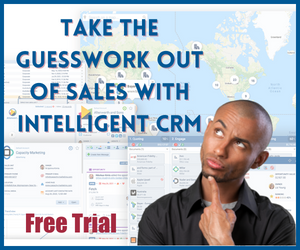Revenue is like any other kind of natural resource. Every salesperson is out there looking for it, but there is only a limited amount of revenue potential. With risk comes uncertainty. Risk is the quantification of this uncertainty. John Golden interviews sales professional Andy Rudin on how to manage revenue risk.
This expert sales interview we cover topics, such as:
- Proactively planning for unknown risks
- Identifying risks on an internal and external level
- Mitigating Risks
Proactive Planning
A lot of organizations tend to look back on mistakes and fix things after they have become problems. However, proactive risk management is possible. “Look at the road ahead and identify potholes before you hit them,” said Rudin. “Look at where the potholes might be and react and respond accordingly so that they do not ruin your car.” Being proactive in risk management is key to increasing revenue.
Internal Risk
The first thing is to recognize that risk can come from many places. “A lot of people tend to look at risk as an internal issue,” said Rudin. “For example, we don’t know what our marketing messages are. We don’t know clearly what our target markets are. We still haven’t figured out our sales hiring criteria, and what makes the most competent salespeople.” However, these internal factors are not the only part of managing risk.
External Risk
The first part of the challenge is to look at things holistically. It is not enough to only look at things internally. The external risk needs to be considered too. There is a technological risk, there is the risk from world events, from the economy, and other unknown situations. All of these external risks influence whether or not salespeople make an impact.
Mitigating Risk
There are certain risks that companies need to understand. To accept these risks, there are specific mitigation techniques that a company can utilize in order to reduce the impact of potential consequences. “You can reduce or eliminate the risks by doing several things,” said Rudin. “You can share the risk with others, you can transfer them to other stakeholders, etc.” On a more personal level for salespeople who sell direct to market, Rudin has additional advice to manage risk. “A very common example is ‘try and buy.’ Companies do that frequently in order to entice a customer to take a product and test it out. A money back guarantee is a risk-sharing strategy.”
To boost your sales and learn about other ways to mitigate risk, watch the video!
About our Host:
John is the Amazon bestselling author of Winning the Battle for Sales: Lessons on Closing Every Deal from the World’s Greatest Military Victories and Social Upheaval: How to Win at Social Selling. A globally acknowledged Sales & Marketing thought leader, speaker, and strategist. He is CSMO at Pipeliner CRM. In his spare time, John is an avid Martial Artist.







Comments